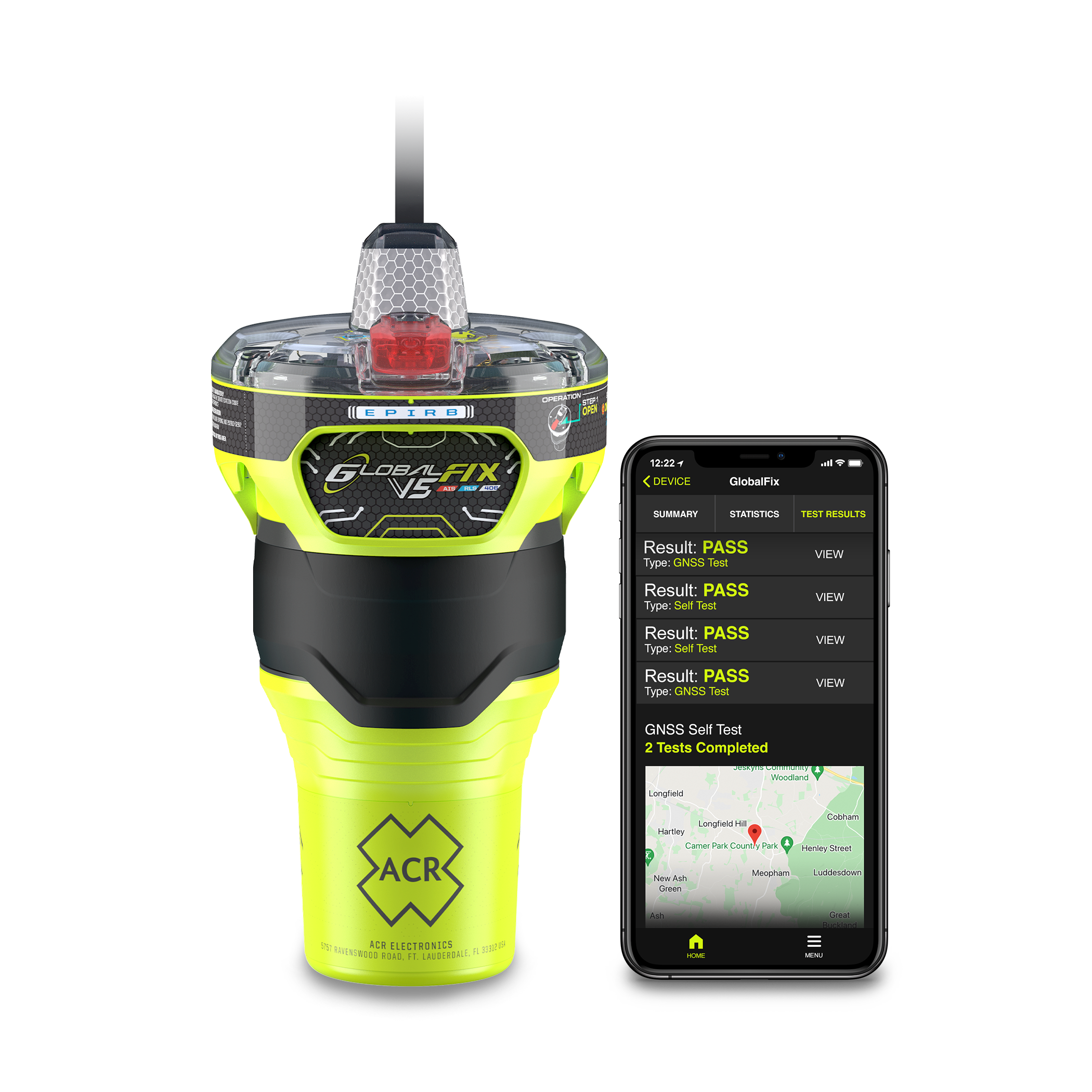This standard specifies the minimum performance requirements, technical characteristics and type-testing requirements of 406 mhz emergency position indicating radio beacons (epirbs) used in the cospas-sarsat satellite
system
, it is based upon iec 61097-2, edition 3. 0 and details only additions, exceptions and changes to that standard.

Personal Locator Beacon [ edit ]
The mcmurdo smartfind epirb is the only epirb that can send all three signals- a 406 mhz gps signal, 121. 5 mhz homing signal, and ais signal over vhf radio frequencies. It weighs 2. 68 pounds and requires six lithium-ion batteries. The ais signal sends alerts to commercial ships equipped with ais technology.
 Ais distress is integrated with most marine radios and also personal locator beacons. It also alerts local vessels that could come to the rescue. This epirb meets all us and international standards. It has a 48-hour fully operational battery with a 10-year storage life span. It also offers protection against accidental activation.
Ais distress is integrated with most marine radios and also personal locator beacons. It also alerts local vessels that could come to the rescue. This epirb meets all us and international standards. It has a 48-hour fully operational battery with a 10-year storage life span. It also offers protection against accidental activation.
See also [ edit ]
This site and its contents are copyright © 2023 sail-world sail-world australia and/or the original author, photographer etc. All rights reserved. Photographs are copyright by law. If you wish to use or buy a photograph contact the photographer directly. If you have any questions about advertising or editorial then please contact our team. If you encounter any technical issues then please email techsupport@sail-world. Com.
Automatic hydrostatic release unit [ edit ]
Satellite 406 mhz epirbs are divided into 2 categories: 1. Category i epirbs can be activated manually or automatically. They are stored in a hydrostatic release bracket designed to allow the unit to float free. In the event that the vessel sinks the category i epirb is typically released at a depth of 3 to 13 feet where it then floats to the surface. A wet switch then activates the unit and it begins transmitting. Additionally the unit can be activated manually by flipping a switch. 2. Category ii epirbs are not designed to float free and must be removed from their brackets manually.
Automatically activated epirb must be used on solas vessels, for example passenger cruise liner, container ship or oil tanker. They are supplied with a plastic enclosure in which the sea switch of the epirb is deactivated. The plastic enclosure contains a spring-loaded lever which automatically pushes the enclosure lid off and releases the epirb if the vessel sinks. This automatic ejection is controlled by a device called a hru (hydrostatic release unit) that will automatically release the epirb once a depth of approximately 4-5 m is reached. At which time it will float free to the surface that enables it to be activated by the sea switch.
In an emergency situation the automatically activation of the epirb will dramatically facilitate the rescue operation and the possibility to save lives. The hammar h20 is the most reliable hydrostatic release unit on the market and is used by most leading epirb manufactures. The hammar h20 is widely used for emergency position indicating radio beacons (epirb). 50% of the world’s epirb manufacturers are using the hammar h20 for the free-float function. Should the vessel sink, the hammar h20, which is activated by increasing water pressure, automatically release the epirb. On reaching the surface the epirb starts to emit a signal of identification and position to a satellite.
Emergency Position Indicating Radiobeacon (EPIRB)
what do you use an emergency position indicating radio beacon (eprib) for? well if you ever have an emergency at sea, will anyone be able to find you? how quickly will they be able to find you? how quickly will emergency services be able to find you? well an eprib will give you your position at sea to the emergency services in case of a distress call ensuring they reach you as quickly as possible. Anyone who buys an (epirb) knows that it could offer them a last chance of survival. While you hope that you won’t have to use yours, but would it even help you if you did?.
The maritime & coastguard agency informs owners and operators that distress alerts from emergency position-indicating radio beacons (epirbs) using the maritime user protocol (and coded with an mmsi that does not start with a valid country code) will be processed as invalid and discarded or delayed by the cospas-sarsat system.
This list is provided as a courtesy, showing emergency position indicating radio beacon (epirb) distress beacon models that, if purchased in australia, are known to meet australian standards as/nzs 4280. 1. We recommend epirbs are purchased in australia to ensure compliance with the national system carriage requirements and registration with amsa. These standards are maintained by standards australia. To find out more about any beacon model, see the manufacturer's website. To find out about float-free epirbs, see our float-free epirb page. There may be additional beacons that meet standards that do not yet appear on this page. Amsa does not endorse any particular brand or model of distress beacon.
Emergency position indicating radio beacons for maritime rescues an emergency position indicating radio beacon, or epirb, is a great piece of electronic safety equipment to have aboard your vessel. Once activated either manually or with water, an epirb will send a 406hz radio frequency signal that will alert uscg of your position and enact a quick emergency rescue response.
No comments:
Post a Comment